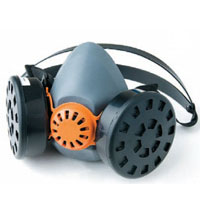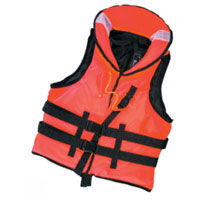| |
Products |
 |
| |
|
Download our product catalogue:
Part #1 (62MB)
Part #2 (47MB)
|
| |
| |
|
| |
Respirator Protection |
 |
| |
 |
Respirators protect workers against insufficient oxygen environments, harmful dusts, fogs, smokes, mists, gases, vapors, and sprays. These hazards may cause cancer, lung impairment, other diseases, or death.
Compliance with the OSHA Respiratory Protection Standard could avert hundreds of deaths and thousands of illnesses annually. Respiratory Protection is addressed in standards specifically for the general, shipyard employment, marine terminals, longshoring, and construction industries. |
|
| |
 |
| |
| |
| |
Life Jackets |
 |
| |
 |
A personal flotation is a device designed to assist a wearer, either conscious or unconscious, to keep afloat with his or her mouth and nose (airway) of his or her head's face above the water surface when in or on water.
Devices designed and approved by authorities for use by civilians (recreational boaters, sailors, canoeists, kayakers, etc.) differ from those designed for use by passengers and crew of aircraft (helicopters, airplanes) and of commercial vessels (tugs, passenger ferries, cargo ships). Devices used by military (army, air force, special forces, marines, navy, coast guard) and police and enforcement agencies generally have features not found on civilian or commercial models, for example compatibility with other worn kit (e.g. survival vest, bullet proof vest/body armor, equipment harness, rappelling harness, parachute) and use of ballistic nylon cloth to protect pressurized carbon dioxide (CO2) canisters used for inflating the vest from injuring the wearer if struck by a round from a firearm. The ballistic cloth keeps the fragments from the canister from becoming shrapnel injurious to the user. PFDs are available in different sizes and different designs purposed for various levels of protection.
|
|
| |
 |
| |
| |
| |
Q Product Range |
 |
| |
|
| |
 |
| |
| |
|